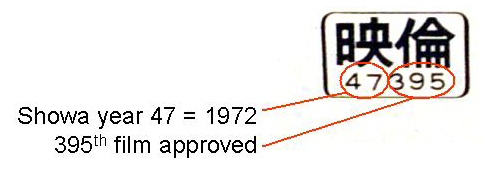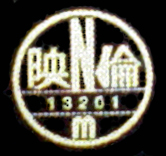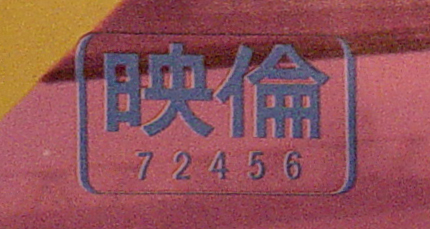Japan,
under its Constitution, enjoys almost full freedom of speech and expression
after the Second World War. However, there have been interventions
by the police and the customs office so far as obscenity concerns.
Their activities are justified in accordance with the criminal law
and the customs tariff law.
Before and during the War, a strict censorship by the government existed
in Japan. For a certain period after the War, there was the censorship
by the allied occupation forces. In 1946, the new Japanese Constitution
was enacted, and the occupation forces advised the representatives
of the motion picture industry to establish a self-regulation organization,
similar to the MPAA Code Administration Office (so-called Hays office).
An early Censorship Board was formed in 1949, but it was criticized
for lack of fairness, partly because the members came from the
Japanese film industry and got funds from them.
In
1956, the board was reorganized inviting professors, lawyers and
teachers from outside, as members of its the commission. The organization
is called EIRIN.
In
1962, it became mandatory that all films released in Japan had
to have a seal from EIRIN. According to Armin Junge, who specializes
in Japanese posters, the seal appears on the posters starting
in 1964.
Eirin
is the abbreviated name for the Motion Picture Code of Ethics Committee
in Japan, which serves the same purpose there as the MPAA does in
America and the BBFC does in the United Kingdom: to classify films
depending on their suitability to minors, depending on whether they
contain sexual or violent material.
Here's
a sample of the bottom of a theater poster showing the ratings with
the EIRIN mark being the circle on the far right:

It
is mandatory that the studio gets the approval from the EIRIN
board before they show the film in the theaters, so the theater
posters normally carry the EIRIN mark to show that approval. Some
advance posters or posters from some small independent studios
don't put the seal on the poster.
The majority of the time, it will distinguish the video poster
from the theater poster, although we have had reports of some
video posters also having the mark. It seems to be cases where
some video posters only print a video sticker over the regular
theater poster, and consequently do not remove the EIRIN mark.
We
have also had reports from collectors that the B-5 posters, called
chirashi, do not have the EIRIN marks. These are used like advances
and released well in advance of the theater release.
To
understand the markings on the EIRIN mark, you must know how to read
the Japanese year.
The
calendar system most widely used in the United States and Europe
is known as the Gregorian Calendar. This sets year 1 as the year
in which Christ was born (even though they miscalculated when
setting up the original system). The year 2000 is a direct result
of setting that date.
In
Japan, people counted years according to the reign of an emperor.
This custom of reckoning years by eras was adopted in Japan in the
seventh century.
From
that time until the nineteenth century, the reigning emperor decided
when one era ended and another began. Under the current system, adopted
following the ascension of Emperor Meiji in 1868, the era begins on
the day an emperor ascends the throne and continues until his death.
Thus the Meiji era began in 1868 and lasted until 1912.
Here's
the eras:
Name |
Start Date |
End Date |
| Meiji |
September 8, 1868 |
July 30, 1912 |
| Taisho |
July 30, 1912 |
December 25, 1926 |
| Showa |
December 25, 1926 |
January 7, 1989 |
| Heisei |
January 7, 1989 |
Present |
EIRIN marks are shown in a variety of ways, here's some examples:

The
majority of posters have the Showa dating. The easiest way to
calculate the date is to add 25 to the first 2 digits.... using
the sample above... it would be 47 + 25 which would be 72 (or
1972)
Here
is a sample using the Heisei mark:

And
finally, here's an EIRIN mark using a western dating that seems to
be becoming more popular:

Different
companies in Japan use different systems... for example:
DAIEI,
NIKKATSU, and SHOCHIKU studios normally use the Japanese system
while TOHO and TOEI use the western system.
This
great information was provided by Armin Junge





